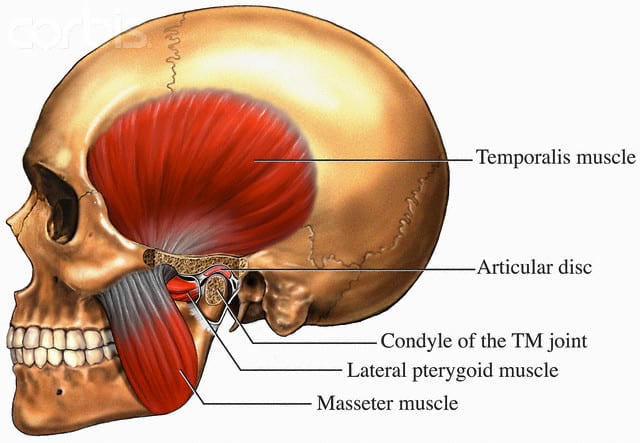What is Temporal Mandibular Disorder and Craniofacial Pain?

Did you know that about 75% of the US population experience symptoms of Temporal Mandibular Disorder (TMD) and Craniofacial Pain (CFP)? Fortunately, in most cases, symptoms will go away; but 10-15% of the population will have chronic pain and will require professional treatment. TMD and CFP involved more than a single symptom and involves multiple cause. The pain may arise suddenly or progress over a period of months to years with intermittent frequency and intensity. The most successful and scientifically supported treatment consists of conservative therapy, which shows that over 50% of TMD patients have few or no symptoms.
Symptoms of TMD and CFP
• Headaches
• Pain behind the eyes or blurring of vision
• Unexplained tooth pain
• Earaches, congestion or ringing in ears
• Clicking, popping or grating sound in the jaw
• Limited opening or locking of the jaw
• Dizziness
• Pain with chewing
• Facial pain and/or numbness of face and head
• Neck and/or throat pain
• Difficulty in closing the teeth together
Download Our Free Guide Below
Temporomandibular joint (TMJ) Explained
The TMJ is a “loose-fitting”, rotating and sliding joint with a fibrocartilage covered, football shaped ball (condyle), fibrous pad (disc), fibrocartilage lined socket (fossa), ligaments, tendons, blood vessels, and nerves. The fibrous pad/disc functions as a moving shock absorber and stabilizer between the condyle and fossa. As the jaw opens, the condyle rotates and slides forward with the disc.

Muscles of Mastication
Muscles of mastication (jaw muscles) connect the mandible (lower jaw) to the maxillae (upper jaw), skull, and neck. These muscles open close, protrude, and move the jaw side to side, enabling you to talk, chew, and swallow. The supporting muscles of muscles of mastication consists of neck and shoulder muscles and these muscles stabilize the skull on the neck during jaw function.

Treatment
Care performed by a physical therapist with a specialization in treatment of TMD and CFP is well recognized as an effective conservative treatment. A comprehensive examination will identify and reduce contributing factors to the neuromusculoskeletal problems, reduces inflammation, restores function and promotes repair and regeneration of injured tissues.
Dr. Andrew Seo, DPT, at the Functional Performance Physical Therapy is dedicated exclusively to the evaluation and treatment of TMJ disorders, craniofacial pain, and neck pain. His approach involves a comprehensive evaluation for proper diagnosis and non-invasive treatments. He provides successful results using research-based individualized treatment in a caring and friendly environment. If you are currently suffering from symptoms listed above and want help immediately or have any questions, visit us at www.fpphysicaltherapy.com. We serve patients from Bryn Mawr, Wayne, Radnor, Havertown, Ardmore, Wynnewood, and the surrounding communities.


 Bryn Maw, PA
Bryn Maw, PA 610-822-1072
610-822-1072